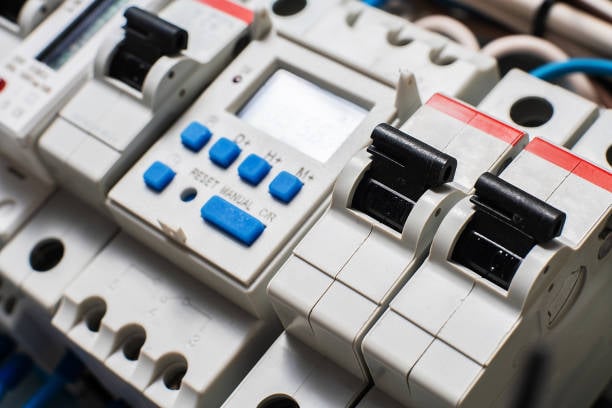The Basics of Circuit Breakers and Residual Current Devices
When it comes to electrical safety, two important devices come into play: circuit breakers and residual current devices (RCDs). While they both serve the purpose of protecting against electrical faults, they have distinct differences and applications. In this article, we will explore the key dissimilarities between circuit breakers and RCDs, shedding light on their individual functionalities and how they contribute to electrical safety.
Understanding Circuit Breakers
Circuit breakers are essential components of electrical systems, designed to protect against overloads and short circuits. These devices detect excessive currents flowing through a circuit and interrupt the flow of electricity to prevent damage to the wiring and appliances. They act as switches that automatically trip or open the circuit when an abnormal current is detected.
Types of Circuit Breakers
There are different types of circuit breakers available, each with its own specific purpose. Some common types include:
- Miniature Circuit Breakers (MCBs): These are commonly used in residential and commercial applications to protect individual branch circuits.
- Molded Case Circuit Breakers (MCCBs): Typically found in industrial settings, MCCBs offer higher current ratings and protection for larger electrical loads.
- Ground Fault Circuit Interrupters (GFCIs): These specialized circuit breakers are designed to protect against ground faults by quickly shutting off power when a leakage current is detected.
Residual Current Devices: An Introduction
Unlike circuit breakers, residual current devices (RCDs) are primarily focused on personal safety. They are designed to detect small leakage currents that could potentially cause electric shock and quickly disconnect the power supply. RCDs are extremely sensitive and can detect even the tiniest imbalance between the current flowing in the live and neutral conductors.
How RCDs Work
RCDs monitor the electrical current flowing through a circuit by comparing the current in the live and neutral wires. If there is an imbalance, indicating a leakage current, the RCD immediately trips and cuts off the power supply. This swift response helps prevent fatal electric shocks in situations where a person comes in contact with a live electrical component or faulty wiring.
Different Types of RCDs
There are various types of RCDs available, each with its own specific applications:
- Fixed RCDs: These are permanently installed in the electrical distribution boards and provide protection to specific circuits or groups of circuits.
- Portable RCDs: Designed for temporary installations, these RCDs can be plugged into sockets, providing protection for devices and equipment.
- Socket Outlet RCDs: These RCDs are integrated directly into socket outlets, offering localized protection for specific appliances or areas.
Key Differences Between Circuit Breakers and RCDs
While both circuit breakers and RCDs contribute to electrical safety, there are some fundamental differences between the two:
- Purpose: Circuit breakers protect against overloads and short circuits, while RCDs focus on personal safety by detecting leakage currents.
- Response Time: Circuit breakers trip relatively slower compared to RCDs, as their primary function is to protect electrical components and wiring rather than human safety.
- Current Sensitivity: RCDs are highly sensitive to small leakage currents and can quickly disconnect the circuit, whereas circuit breakers are typically set to trip at higher current values.
- Installation: Circuit breakers are typically installed in electrical distribution boards, while RCDs can be fixed or portable, providing flexibility in their application.
Applications of Circuit Breakers and RCDs
The specific applications of circuit breakers and RCDs are determined by their unique features:
- Circuit breakers are commonly used in residential, commercial, and industrial settings to protect electrical installations, equipment, and appliances.
- RCDs find extensive use in areas where personal safety is of utmost importance, such as bathrooms, swimming pools, construction sites, and portable electrical tools.
Conclusion
In summary, circuit breakers and residual current devices are crucial components of electrical systems, each with its own distinct purpose. Circuit breakers protect against overloads and short circuits, safeguarding electrical equipment and installations, while RCDs prioritize personal safety by detecting leakage currents and swiftly disconnecting the power supply. Understanding the differences between these devices is essential for maintaining a safe electrical environment.

